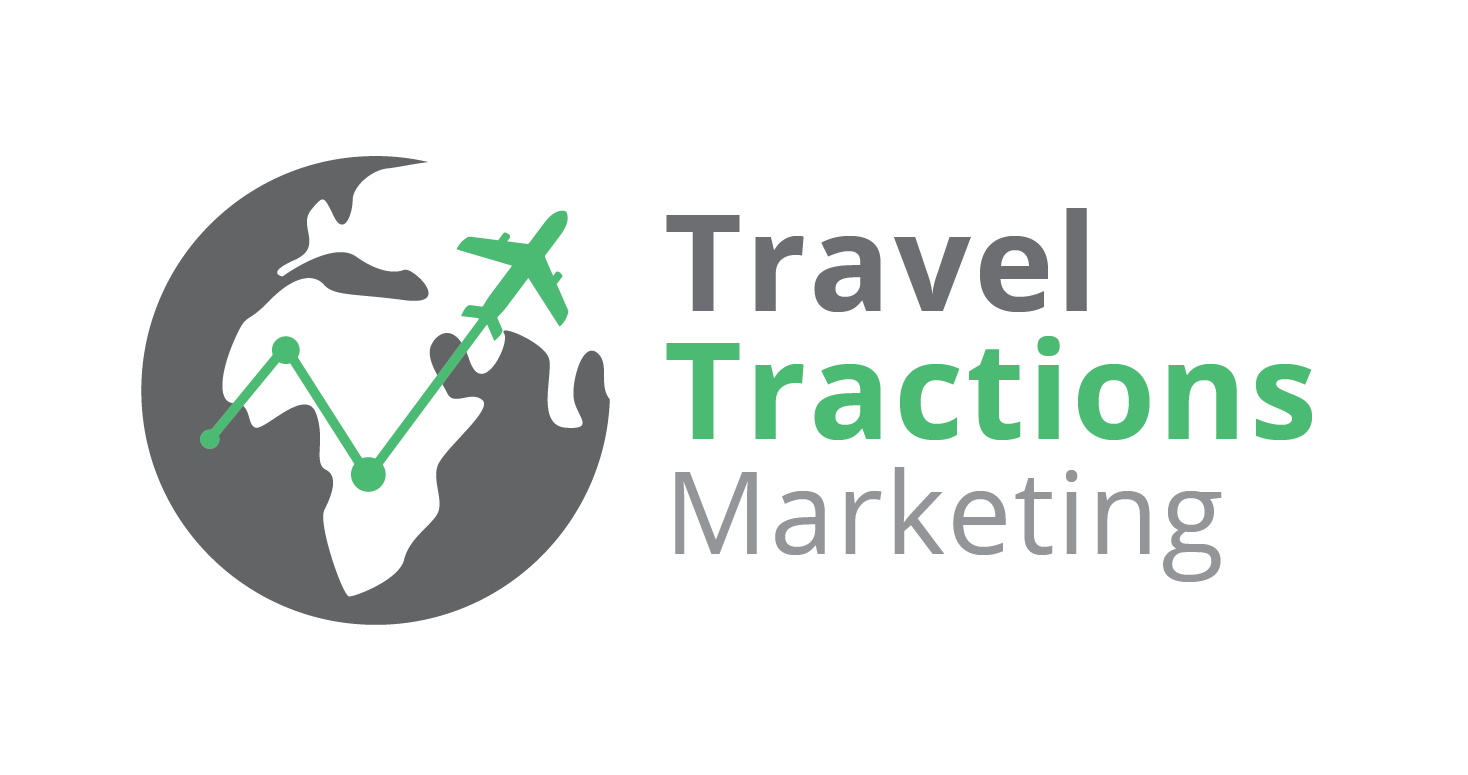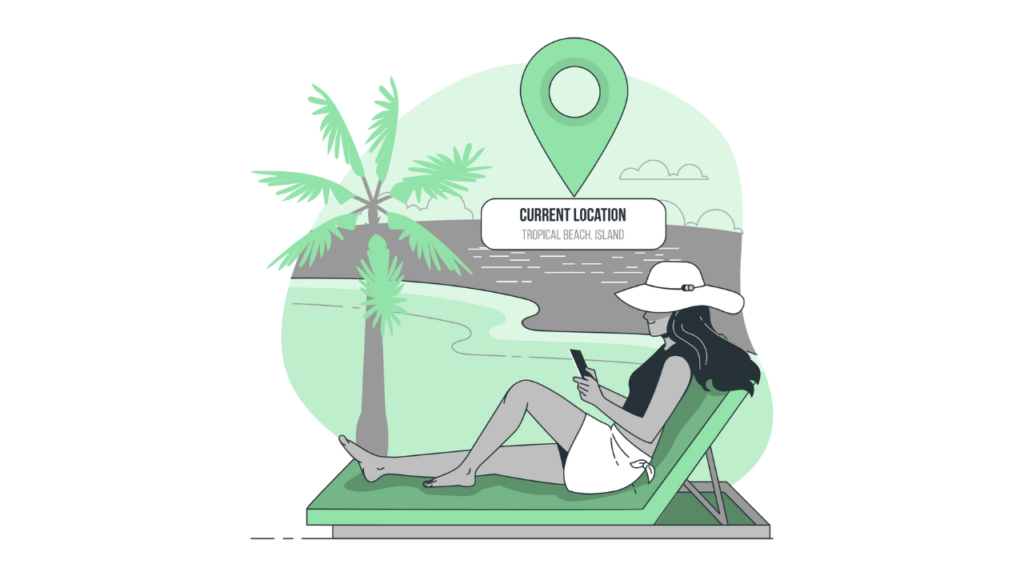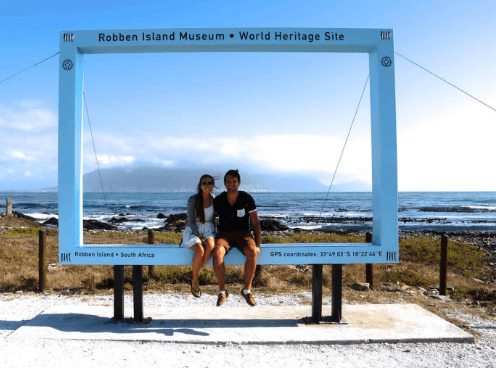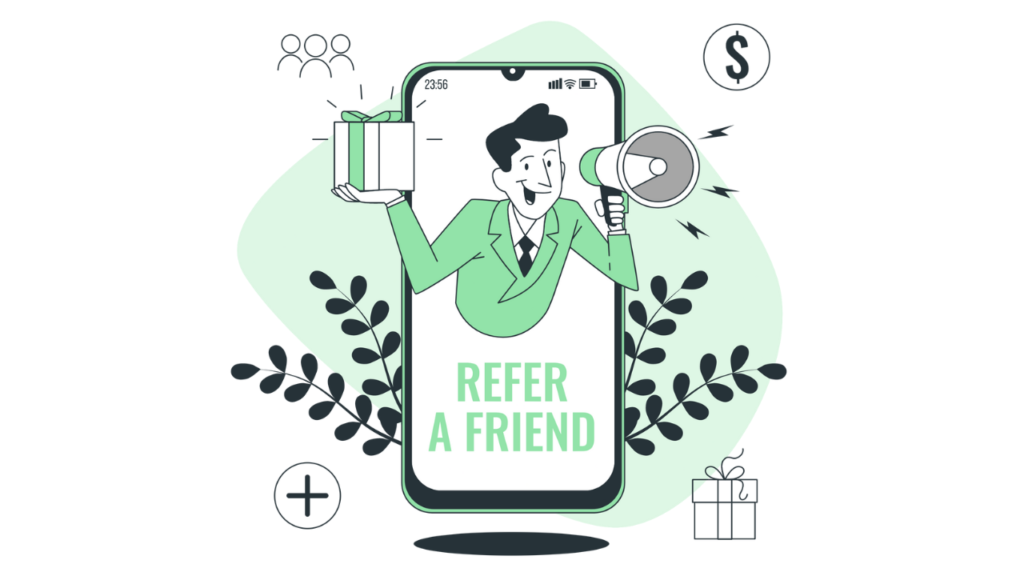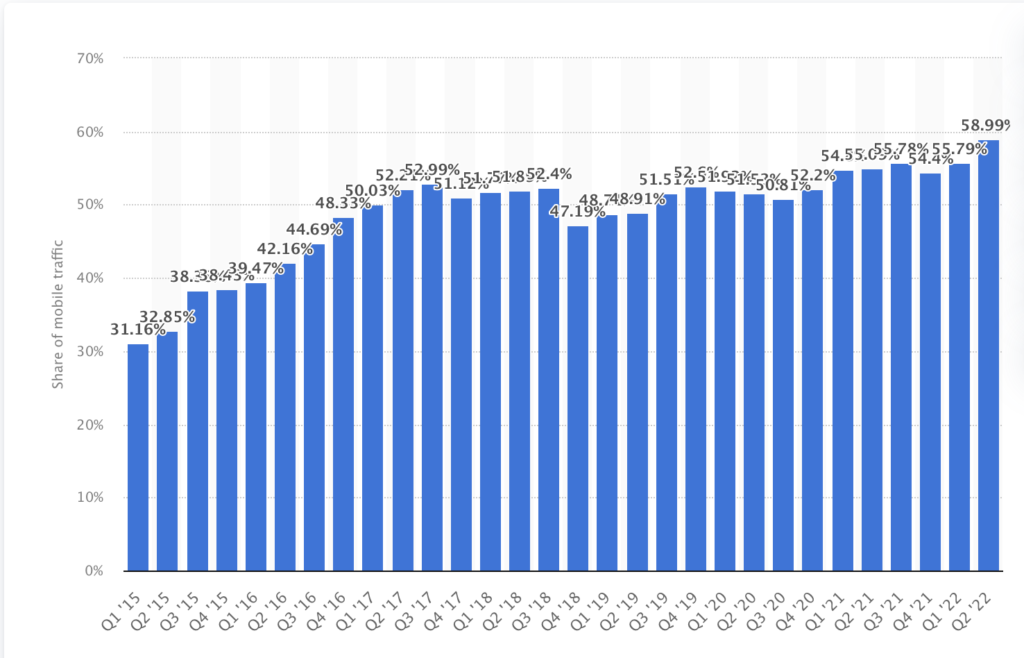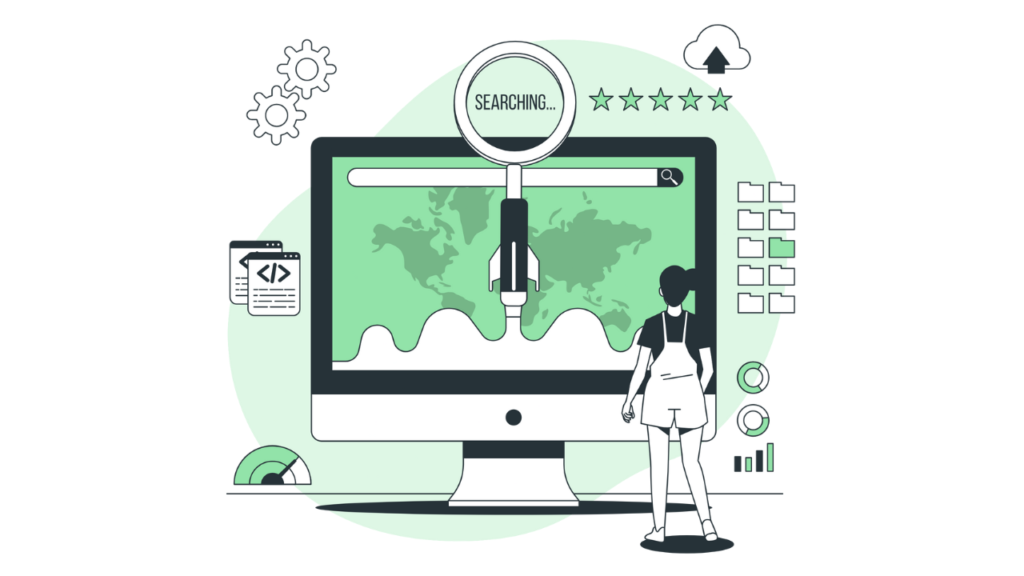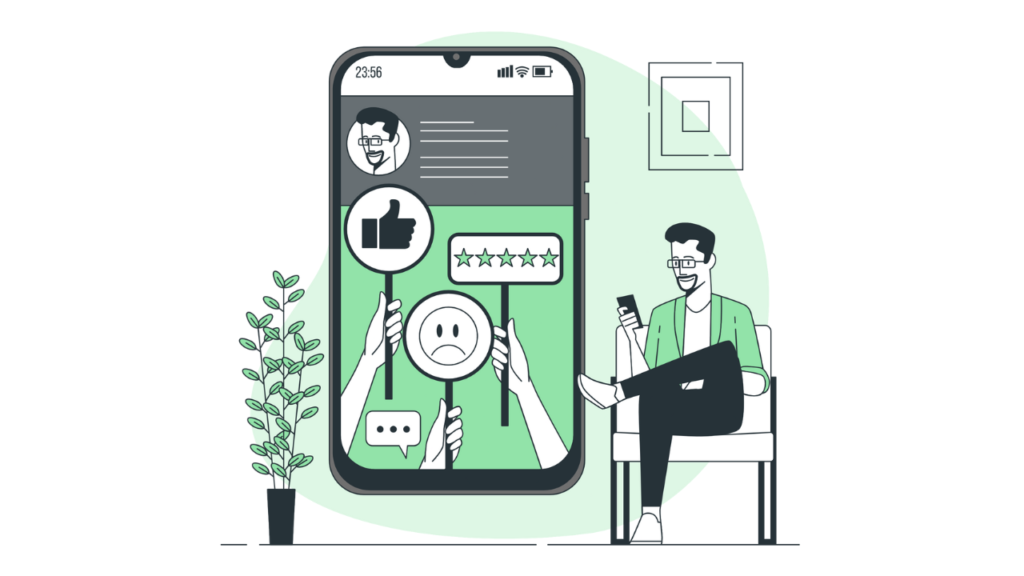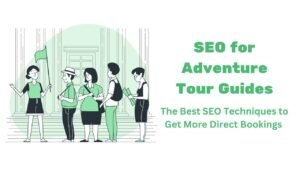
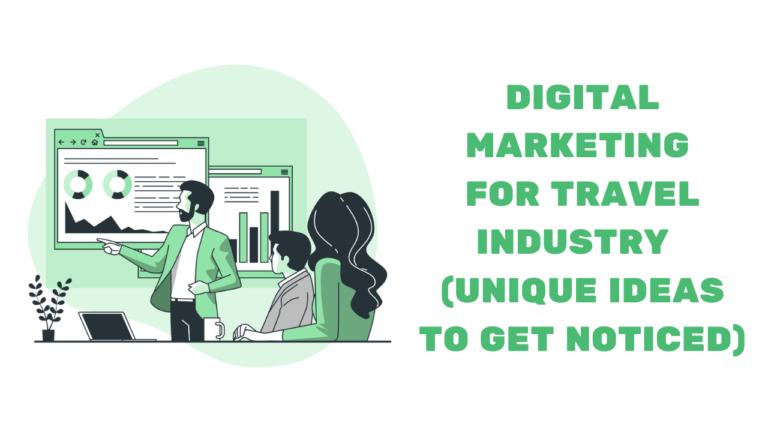
16 Digital Marketing Strategies for the Travel Industry
When it comes to digital marketing for the travel industry, you cannot simply do what everybody else is doing and hope it’s going to work. While standard tourism marketing is essential to the survival of your business, it’s important to take steps to go above and beyond. This way, you can ensure you are doing everything possible to make your business a success.
Digital travel marketing comes with its challenges, though, so don’t expect an easy ride. The travel industry is one with giant competitors always vying for your audience’s attention. That, mixed with the fact that traffic and travel interest are seasonal, can cause travel companies huge amounts of stress.
Having a solid digital marketing travel strategy is the best way to reach your business goals. But before getting stuck into a handful of unique tips and tricks for your travel digital marketing strategy, you need to find out exactly what digital marketing for travel really is.
What is Digital Marketing in the Travel Industry
Digital marketing for travel industry businesses is the online or digital component of marketing. Travel businesses make use of online platforms to interact with their audience, promote their products and services, and MAKE SALES.
Travel Industry Digital Marketing | Handy Tips & Tricks
In the 21st century, your business is not going to get very far without the help of travel digital marketing. Here’s what you can do to improve your strategy and the reach of your tourism company.
Interact With Customers Where They Are
In order to build rapport with customers, you want to interact with them where they are spending their time. This is also a good way to acquire new customers as they are likely to see this type of interaction.
A good place to start is by using the most popular social media platforms, such as Facebook. While the fact that people can provide honest feedback for your business in the online space might be scary, it is highly beneficial. You can respond to people’s feedback, and you can also use it as a learning experience to better your business.
You can also stay in touch with your potential customers by interacting in Facebook groups that would be of interest to your target audience. This is also a great way to help new potential customers to find you.
Keep Your Website and Content Up to Date
When people visit your site, you want to ensure that you have new, fresh and relevant content for them to read. You’ll also want to update old content to make sure that the information is correct.
Users are hungry for content, but there is also more competition than ever before. So stay ahead by producing hyper-relevant content to what is happening in the world of travel right now.
It’s also best to show your potential customers what makes you an authority in the niche. Having extensive author bios, about pages for each tour guide, and a list of experiences in the travel industry is essential to ensure users know that you know what you’re talking about.
Use Visuals to Show Your Audience What You Offer
If you hear the words “tour company in South America,” you may have very little emotional response. But if you see a group of people hiking up Machu Picchu with a tour guide and taking in the stunning views, you will likely feel an intense desire to join them.
So use storytelling and powerful visuals in your digital marketing strategy to ensure the right message is coming across. There are many platforms you can use to do this, but use the following to make your strategy all the more powerful – storytelling, video content, podcasts, and blog posts.
If your audience knows exactly what they can expect from you and your travel product or service, they are far more likely to make a booking.
Make Use of User-Generated Content
Outsourcing content is ideal as it saves you time, but it can come with a price tag. Using user-generated content is a great way to populate your social media feeds with little to no effort.
It’s the age of the influencer, and everybody can make great content with a smartphone in their hands, so why not encourage your customers to tag you when they post about their experience?
Having something really gimmicky is a sure way to get users to post content, so try and think of a creative way to add something that people will WANT to share. Take the below image from Stoked to Travel, for example, adding a frame encouraging people to take a photo and tag the relevant tour companies.
This way, you can repost with just the click of a button and have new content without the effort of actually creating it yourself.
Use Chatbots for an Instant Response
The digital age has come with great expectations, and customers now expect an always-on approach. If they message you, they want an instant response, or they’ll be willing to go elsewhere.
While it’s not realistic to have someone on standby 24/7 to provide instant responses, chatbots can fill in when there are no human resources available. Chatbots can easily answer frequently asked questions, and when they don’t have the answers, they can put people in touch with a real person.
Chatbots work well on websites as well as instant messaging services such as Whatsapp and Facebook Messenger.
Try Influencer Marketing
Influencer marketing has taken the world by storm and is now actually a very popular form of marketing on social media. Instagram is the most popular place for this to take place because of its very visual nature, but both TikTok and YouTube are platforms that you can also utilise.
The best part is it doesn’t have to come at a great cost to your company. Depending on the influencer’s follower count and level of engagement, they may accept nothing but your services in return for promoting your product or services to their followers.
Make Use of Paid Advertising
For the first time in history, you can reach a very targeted audience through social media or Google Ads with your advertising and do so cheaper than ever before. You can quite literally advertise to people who are already looking to travel to your region or even looking for your exact service.
PPC (pay-per-click advertising) means that you only pay for the advert if a customer actually clicks on your landing page. If you optimise your PPC ads correctly with very targeted keywords at the right time of year, it can be an affordable way to advertise.
If you want to optimise your PPC ads, this is a great starting point:
- Make sure that you are using the keyword you would like to target in your main headline.
- Numbers catch people’s attention, so include numbers somewhere in your PPC copy. This can be starting prices, the number of days (for tour companies) etc.
- Create a sense of urgency! The best way to do this is to include a deadline for the specific deal that you are advertising. This encourages readers to make the purchase urgently rather than deliberating about it for a couple of days.
- Provide social proof in the copy – a good way to do this is by letting people know you’re 5-star rated (if that is the truth) or telling them the exact number of satisfied customers you have served. If 500 people have been on your tours, then you must be a reliable tour guide service.
- Include a call to action at the end of your copy that encourages people to make a booking rather than wait. The goal of your PPC ads should be to make a sale, not cause people to think about whether they should MAYBE book your services.
When you are creating your PPC ads, remember to target very specific niche keywords. The more general keywords will cost you more money, and they will not convert as well as specific keywords will. So think about what sets you apart from your competitors and use that as a compelling selling point in your ad copy.
Deep Dive Into the Data
Using digital platforms to market your travel products or services means that you have access to a whole lot of data (on each social media platform as well as on Google). You can use this data to make informed business decisions, as well as to personalise the user experience you are providing on a large scale.
The data will also help you understand how users are interacting with your content and how far along the customer journey they are losing interest. This means you can intercept them at their most vulnerable to keep them interested in what you have to offer.
Enable Online Bookings and Transactions
As millennials become one of the biggest travel audiences, the way bookings are made is changing rapidly. People no longer want to get in touch with someone on your team. Instead, they want to be able to make a booking online and move forward with the transaction.
This contactless way of operating is the way of the future, so it’s best that you start implementing this early. Customers are now happy to go elsewhere if you don’t offer their preferred way of booking. Find out how to use SEO to get on your website.
Keep Potential Customers Interested
You need to find a way to keep potential customers interested in your services, and a great way to do this is by using email marketing. First, you’ll need a way to build an email list, and here are a couple of effective ways to do that:
- Use pop-ups and overlays
- Offer a freebie
- Include an opt-in field on your check-out page
- Use a loyalty or referral program
- Competitions
If you need help with adding sign-up functionality to your website, we offer tourism web development services that can help you.
Once you have an email list, you can start creating powerful email campaigns that aim at converting customers, as well as providing them with information that would be valuable to them. This is a great way to build loyalty with return customers and push your audience that is on the fence to take the leap and make a booking.
Make Sure You’re Mobile Friendly
The use of smartphones has been on the rise since the start of the 21st century. And since humans have had the opportunity to walk around with a computer in their pocket, we have been using them more and more every day.
This graph from Statista shows us just how much web traffic from mobile has been on the rise. In 2017, mobile traffic overtook desktop traffic for the very first time, and it has been increasing ever since. In the later portion of 2022, mobile traffic increased to 58.99% of total web traffic.
So as you can see, if you want to cater to the large majority of web users (which you most certainly do), then you need to ensure your website and booking systems are mobile-friendly. At the risk of losing more than half of your potential sales, this is absolutely crucial.
So how do you find out if your website is mobile-friendly? You can check this manually by going onto your website on your mobile device, or you can use Google’s mobile-friendly diagnostic tool.
The tool will not only give you a basic answer of “yes your site is mobile friendly”, or “no it isn’t”, but it will give you a list of items that you could change to make your website MORE mobile friendly.
One of the key pages that should be checked for mobile usability is your bookings page. It’s a good idea to go through this process yourself and see if you can make a booking through your mobile device. If there are any buttons or functionalities that give you some trouble along the way, it may be time to get a web developer involved to ensure a smooth mobile-friendly experience for all of your mobile users.
SEO Optimise Your Website
SEO is a huge part of digital marketing. Here at Travel Tractions, we’re huge fans of SEO because once you’ve put in the hard work, your website can make sales for you while you sleep. The effects of SEO are long-term, so it doesn’t require a continuous stream of your budget, making it one of the most efficient ways to market your travel business.
While a good SEO strategy has many different parts, here are the basics that you should be focusing on:
- Check Site speed – Make sure your site is loading efficiently. A slow loading speed will cause users to bounce off your website before they’ve even had a chance to look at your content.
- Use highly relevant keywords – when creating website content, you need to use keywords that are highly specific to your niche. The more specific the keyword is, the more likely it is to bring you traffic that will convert to a sale. After all, sales should ALWAYS be the main goal.
- Build EAT (expertise, authority, and trust) – Let your users and Google crawlers know why you are an authority in your specific travel niche. If you are a tour company, for example, create pages for each of your travel guides outlining their background. It’s also a good idea to display any awards and certificates you have received on your website to build trust with your audience.
- Build authoritative links – If you want your pages to rank in Google, then the search engine needs to view you as an authority in your niche. Use link building services to acquire links from authoritative sources to increase your chances of ranking in SERPs.
Don’t Underestimate Social Proof
Social proof is everything these days, and with just the click of a button, potential clients have access to reviews and ratings that other customers have left you. So how do you ensure that the RIGHT people are leaving you reviews?
Well, quite simply, you ask them. When a satisfied customer has just finished up with a tour, a stay at your hotel, or a trip in your limo, pop them an email and ask them to rate you on the platforms that you deem most valuable to your business.
It’s best to do this soon after their experience with you so that it is still very much fresh in their memory. Depending on where you focus your digital marketing efforts, these are a couple of places you can try to encourage reviews and ratings:
- Google My Business
- TripAdvisor
This will obviously depend on which platforms your customers go to for social proof. If you’re unsure, why not ask them? A little survey can go a long way in trying to understand your own clients.
How Will You Implement These Digital Travel Industry Marketing Tips?
The era of travel has brought with it a wealth of different ways to market your business in the digital world, quite literally at your fingertips. Never before have we had access to such a large and engaged audience, so it’s time you started utilising all the avenues available to you.
